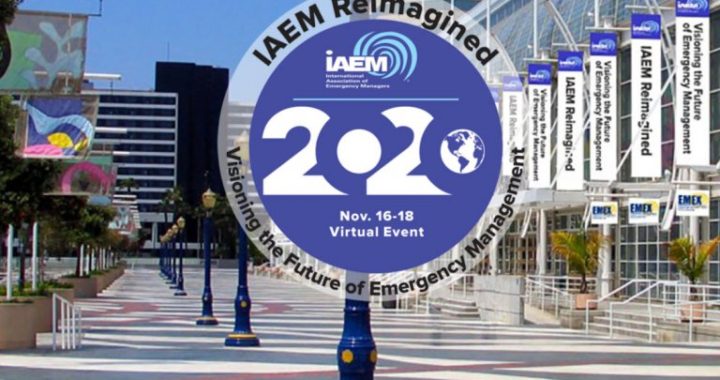Completed my virtual presentation for the annual conference of the International Association of Emergency Managers on Wednesday. The talk went pretty well, though doing it virtually was a little strange. Apparently, the internet service we have at home provides us with fairly low bandwidth and we were operating right on the edge of connectivity. But we shut off everything else in the house that was drawing bandwidth – plus all the lights and the washing machine, just to be sure – and we managed to squeak by.
The conference was supposed to be in Long Beach, CA, but was conducted virtually as a result of the ongoing pandemic. When it was originally scheduled, I seriously considered taking the train from Ohio to California, just to do it. I am not afraid of flying – though no power on Earth could have gotten me into a Coast Guard helicopter back in those golden days when I served in that perpetually cash-strapped organization – but a couple of days on a train, with nothing to do but sit around, read, and watch America’s post-industrial landscape roll by through the large unwashed windows, sounded pretty good.
The title of my talk was ‘Same Planet, Different Worlds: Bridging the Gap Between Law Enforcement and Emergency Management.’ Since I have worked in both fields, it was a topic that I was quite familiar with. The main point of the talk was that although law enforcement and emergency management may seem similar, they are in fact virtually opposites in several fundamental ways.
Except for the handful of people who actually do it, no one in this country knows anything at all about emergency management, but most people – having seen a million episodes of ‘Cops’ – think they understand American law enforcement. Most people, of course, are mistaken.
Here’s a quick introduction to law enforcement in America:
American police departments use an organizational model and administrative practices developed in the period just after the civil war. That is, the Abraham Lincoln/Robert E. Lee civil war, not the impending civil war that will be starting any day now. If you look at the organization chart from virtually any large police department from 1930 and compare it to the same department’s organization chart today, you will not see a significant difference. You might not see any difference at all. The highly bureaucratic and severely hierarchical organization of police agencies makes them virtually impervious to innovation. Good thing the nation hasn’t changed much since 1870.
The last great technological innovation in American law enforcement was when they put two-way radios in police cars – around 1935. If you need a police officer today, the process is exactly the same as it was during Franklin Roosevelt’s first term. You call a central dispatch center on a telephone, someone answers, and they use a radio to send a police officer to your location. There have been lots of technological advances since then – computer-assisted dispatch, DNA analysis, COMPSTAT, automated license plate readers, and so on – but these are process improvements on the margins. The fundamental concept of operations of American law enforcement hasn’t changed in nearly a century.
Police are the only government employees – you know, deep state bureaucrats – who are empowered to kill Americans, with the possible exception of executioners at state and federal prisons. Of course, since most states refuse to reveal who actually performs lethal injections, we don’t really know who most executioners are. But, in any case, executions are rare – 22 in 2019 – while police kill about 1,000 of their neighbors and fellow citizens each year. That might not sound like many, and in a country of 330 million maybe it isn’t, but every police extrajudicial killing is a failure of the criminal justice system. And American police kill far more citizens than do police in any other modern industrialized nation. American police have a lot of assigned responsibilities, but they are not supposed to be juries, judges, and executioners. But while police are empowered to take your life – and their actions may or may not be seriously reviewed if they do – entry requirements for law enforcement jobs in America are frequently the same as entry requirements for minimum wage retail or food service jobs. Given the enormous authority and discretion we bestow on police, you might be pleased to know that in Ohio police officers must complete 737 hours of state-mandated training to be certified. That might sound impressive, until you learn that barbers in Ohio must complete 1,800 hours of training to be certified, and cosmetologists must complete 1,500 hours. But that’s probably not something they mentioned on ‘Cops.’
November 20, 2020
